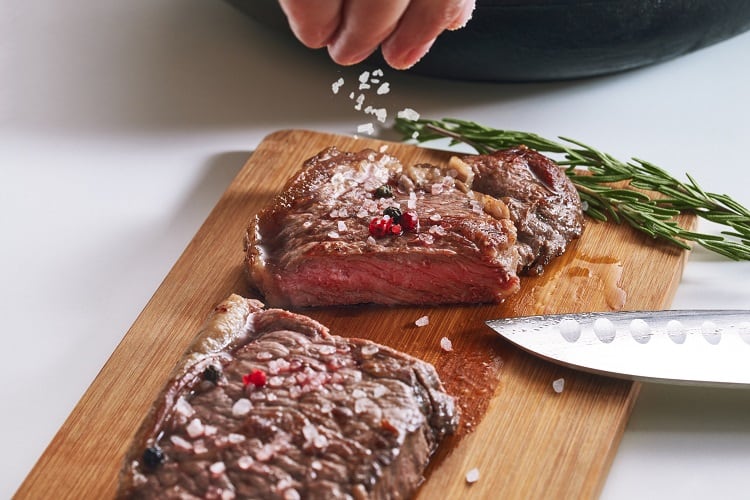Edible fungi have been consumed by humans for millennia, often unknowingly in products such as leavened bread and fermented juice.
While fungi continue to be a mainstay in bakery and beverage production, it also has potential in the realm of alternative protein. An influx of entrepreneurs is turning to fungi – and more specifically mycelia: the root-like structure from which fungi grow – to produce sustainable alternatives to meat.
Yet in Europe, very few mycelium-based alternative protein products exist on the market. The big exception is Quorn Foods’ mycoprotein, derived from the mycelium of Fusarium venenatum, which first launched in 1985.
Why are new mycelium-based food products yet to enter the market? Which major hurdles are standing in the way of commercialisation, and how can they be overcome?
Mycelia is fungi right… so why a novel food?
Under EU regulations, any food that was not consumed ‘significantly’ prior to May 1997 is considered a novel food and requires pre-market authorisation.
These rules are in place to help ensure consumer safety, explained Dr Martin Rühl, who heads up the working group on biochemical and molecular biological food analytics and biotechnology at the University of Giessen, Germany.
“Nothing can be sold or consumed that might be toxic,” he elaborated at the Future Food Series: Mycelium event co-hosted by ProVeg Incubator and Zintinus.
However, Dr Rühl is doubtful mycelia is harmful to humans. Most, or indeed all companies, are working with fungi. “Edible fungi have been consumed for hundreds of years, and I think the risk is either very low, or non-existent.”
Backing up his claim is research into the nutrient properties of the ‘fruiting bodies’ of mushrooms – the part we purchase in supermarkets – and vegetative mycelium. The differences, he stressed, are nominal.

Germany- and US-based Bosque Foods (formerly Kinoko Labs) has undertaken research to determine whether every type of mycelium in Europe will be considered a novel food from a regulatory perspective.
Findings suggest that unless a mycelia strain is already approved, it will be considered novel. These were not the results Bosque Foods founder and CEO Isabella Iglesias-Musachio was hoping for.
“I don’t think it should be considered novel,” she told the Future Food Series event. “I think there is enough evidence to say there are no toxicity issues. The composition is [only slightly different] to fruiting bodies…”
The concern for the European Commission, suggested Iglesias-Musachio, lies in the production method for these mycelia strains. “Even if an ingredient is similar [to an approved ingredient], if the way it is produced is different….it is considered novel.”
If it is a novel food, what’s your Plan B?
The question mark remains whether the Commission will judge mycelia a novel food or not.
Daniel MacGowan von Holstein, who co-founded Keen 4 Greens in 2019, has never considered mycelium a novel food. From a genetic perspective, there is ‘basically no difference’ between the fruiting body and mycelium of fungi, he told delegates.
“Our argument has always been that there it shouldn’t fall under Novel Food [regulation].”
However, given the uncertainty, the German start-up has established a ‘Plan B’. “We are in the process of building a huge production facility in Hamburg and don’t want to find out next year that we can’t sell [our product] because it’s a Novel Food.”
Keen 4 Greens wants to eventually sell its mycelium ingredient – which it grows over a 5–7-day period leveraging submerged fermentation technology – to makers of plant-based meat alternatives.
The company’s Plan B is to sell its ingredient to pet food companies – the pet food market has less stringent regulations compared to food. And its Plan C, MacGowan von Holstein explained, is to produce its mycelium across the pond, where novel mycelium-based products are already on the market, for US-based manufacturers.
“We are also looking at Novel Food application in the EU, but at the same time I don’t think that is should be a Novel Food.”

Barcelona-based Libre Foods is also getting creative with strategies to enter the market quicker than Novel Food regulation might otherwise allow.
In fact, Libre Foods plans to launch its first product – the ‘first ever’ mushroom-based bacon – in November of this year. For this product, Libre Foods is working with the fruiting bodies of mushrooms, rather than mycelia.
“We don’t face [the Novel Foods] challenge with our bacon…we’re working with fruiting bodies of mushrooms – which are already approved in the EU – to be able to get onto the market…while we continue to develop our [mycelia-based] technology in the background,” explained CEO Alon Ramos.
Scaling submerged fermentation technology
Another key challenge for mycelium innovators lies in achieving scale.
How start-ups overcome this hurdle largely depends on their fermentation approach, the most common of which is submerged fermentation technology. By submerging substrate in liquid, oxygen exposure is prevented, and anaerobic growth of mycelia is promoted.
Once an optimised medium is obtained, which includes ensuring optimal pH levels, start-ups will work to upscale. At this point, shear stress can become an issue. Shear stress is developed due to the velocity gradients within the fluid flow and has the potential to seriously affect mycelium growth and mycelial differentiation. Potential solutions include switching propeller type and playing with different speeds, suggested Dr Rühl. “That may have a great impact.”
Another important factor is oxygen availability. Some production processes require more oxygen than others, and the professor explains this is a key consideration when increasing scale.
In Germany, Keen 4 Greens is working with submerged fermentation technology. But while others in the space are hoping to scale up into 50,000L or even 100,000L tanks, Keen 4 Greens is taking a different approach: the start-up is building ‘bioreactor farms’ with smaller volumes.
“Our plan is to have a production facility of around 30-40 1,000L tanks, being able to produce around 30,000-40,000L per week,” said MacGowan von Holstein.
The advantage is at least two-fold. Firstly, as mycelium attaches itself to ‘everything’ – including the walls and different parts within the bioreactor – it requires extensive cleaning, which increases downtime. “The advantage we see with small [tanks] is that they can go into [a type of] dishwasher and go straight back into production. Our turnaround time is very quick.”
The other win lies in containing any potential contamination risk to smaller vessels.
“We are in the process of scaling,” continued the co-founder. “We will have the walls of our production facility standing by the end of the year, and will likely start production of our 30,000-400,000L capacity by Q2 next year.”
Scaling solid-state fermentation technology
The solid-state fermentation approach is the lesser known of the two. Oxygen is also a relevant factor, and the thickness of the substrate is a consideration when ensuring supply to its ‘inner parts’, explained University of Giessen’s Dr Rühl.
“In most cases, you have to keep a flat substrate, to allow for oxygen [supply],” he added, suggesting added implications for upscaling.
Bosque Foods’ Iglesias-Musachio, who is using this approach to develop mycelium-based whole cuts, agreed there are challenges for solid-state that don’t necessarily apply for submerged fermentation technology.
“The challenge for solid-state is that there is not…a plug and play solution. Today, there are no contract manufacturing organisations (CMOs) for commercially scalable production of solid mycelium.
“That is a big challenge, because you have to…crack the code for how you’re going to develop your own type of facility.”
Bosque Foods’ strategy is to look to adjacent industries with proven success in scaling solid-state fermentation products, and ‘piggyback’ on their solutions. This may help address another challenge in terms of cost: Bosque Foods needs to select scalable solutions that, with economies of scale, will allow its products to compete with the prices of animal meat.
“The advantage of our approach is that we can work with existing manufacturing systems…It does take time and a deep level of expertise within our team to be able to retrofit a process to that new type of equipment, but if you are able to do it, [it can prove a] much cheaper way.”
In retrofitting existing technology, the start-up is also leapfrogging another hurdle in the fermentation sector. A major challenge lies in commercial fermentation capacity, due to the influx of entrepreneurs entering the fermentation space – whether that be in mycelium production or precision fermentation-derived compounds. “There is definitely not enough capacity for them all to scale, which means they will likely need to build their own production facilities, build their own bioreactors, and that is incredibly expensive.”
Bosque Foods has identified ‘a few’ potential sites for production, with plans to start producing within a year. “That will allow us to get to a semi-industrial stage,” she explained.
When will we be eating novel mycelium-based products?
Once regulatory and scalability hurdles have been overcome, novel mycelium-based products will reach European plates. But when will that be?
Keen 4 Greens’ MacGowan von Holstein is hopeful new mycelium-based products will reach the market ‘very soon’: as early as late 2022/early 2023.
Hamburg-based Mushlabs, which is leveraging submerged fermentation to produce mycelium ingredients for the B2B market, and finished products for B2C, is already in its commercialisation phase. “We are…finalising the upscaling of our production processes to an industrial level, establishing partnerships with major companies in Europe, the USA and Asia and preparing to announce the launch of our first product,” co-founder and CEO Mazen Rizk told FoodNavigator earlier this year. This year, 2022, is ‘all about commercialisation’, he added.
If new mycelium-based products can enter the market that quickly, it will be ‘great’ news for the ‘whole mycelium outfit’, said MacGowan von Holstein.

According to Libre Foods’ Ramos, a ‘best-case scenario’ would see new mycelium-based products enter the market within the next 3-5 years. The start-up has ‘every interest’ in expanding to Latin America as well, which would also see Libre Foods edge closer to the ‘very lucrative’ US market. “We aim to make plans around that around 2025.”
It’s ‘hard to tell’ when new mycelium-based products will hit the market, responded Bosque Foods’ Iglesias-Musachio, but the founder and CEO is estimating between 2-5 years in a ‘best-case scenario’.
“It could even be 18 months, but that would be from the point of submission of your dossier. So I’d say between 2-5 [years] if you’re being realistic.”
It’s also region-dependent, she stressed. Bosque Foods is working with regulatory consultants in different regions to evaluate regulatory environments. In the US, it might take between 12-15 months, whereas in Europe it can take anywhere from 22 months-onwards, she explained. “That can become much longer, depending on the tests the European Food Safety Authority (EFSA) requires you to perform in order to sure the safety of the product.”
Iglesias-Musachio hopes that down the line, other companies will ‘have it easier’. “Right now, especially in Europe, it’s definitely challenging for companies that are trying to create better solutions with a sustainable advantage, but we have to pave the way for others to come.”
Learn more about how Bosque Foods, Keen 4 Greens, and Libre Foods are ‘unlocking the potential of the fungi kingdom’ with mycelia HERE.




